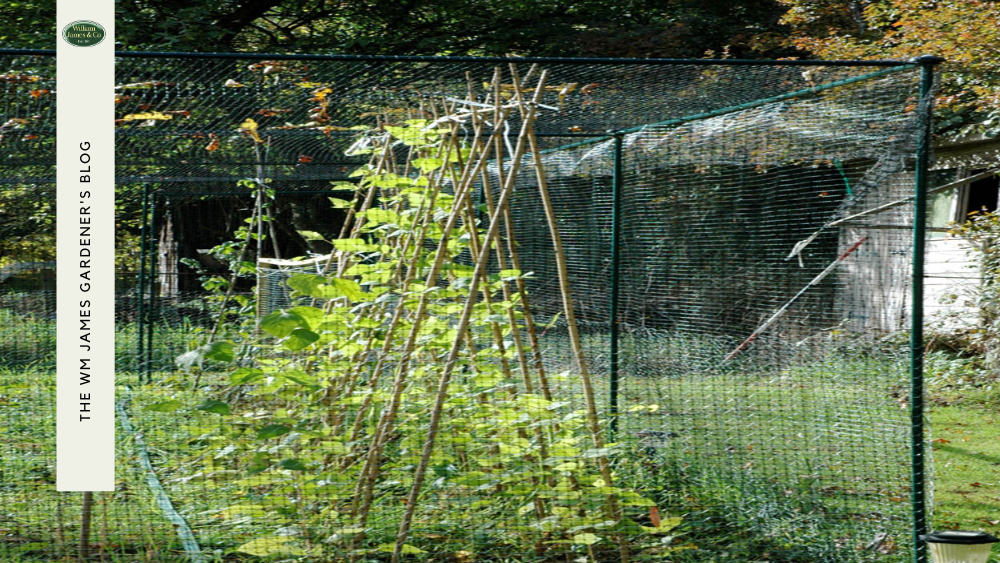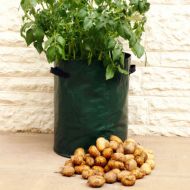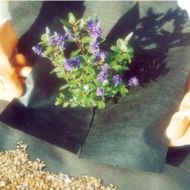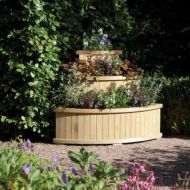We use cookies to make your experience better. To comply with the new e-Privacy directive, we need to ask for your consent to set the cookies. Learn more.
10 Allotment Design Tips for Beginners & Experts
- Admin
- WM James Gardening Blog
- 7 Jan 2022
-
2018views
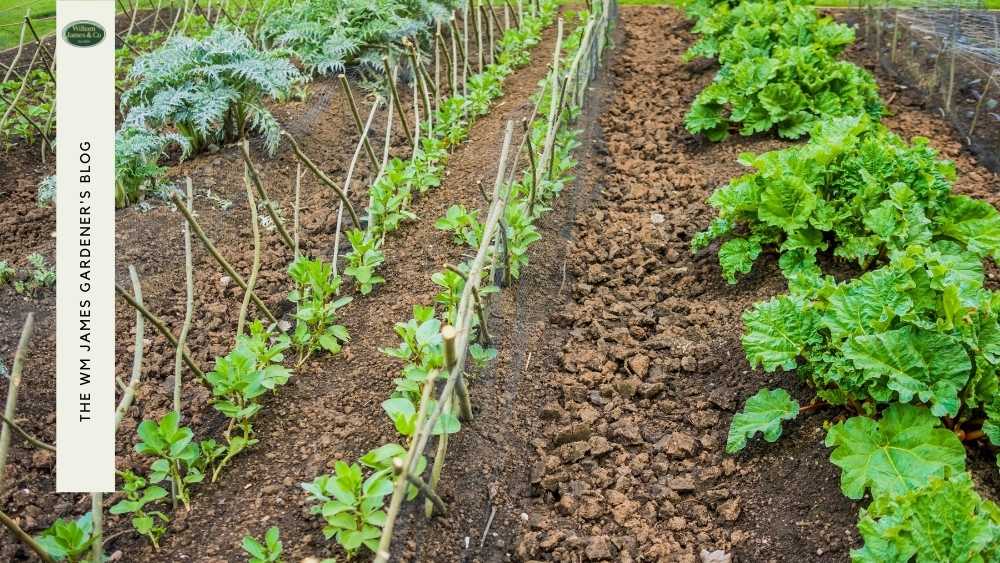
Fruit trees, raised beds, fruit cages and crop rotation. As an allotment owner, these are all elements you need to think about when planning your allotment design. And WM James has all the beginner allotment ideas you need.
A vegetable garden is a great way to grow your own fruit and veg, but it does take some planning to ensure you get the best yield for your effort.
Allotment planning might seem a little overwhelming at first, but with the right allotment site and a bit of vision (we can help you here), you can grow your own food, spend time relaxing, and enjoy the perks of being an allotment holder.
You'll, of course, need some equipment to get you started. Below are some of our recommended tools, so you can design the best allotment possible! (We also offer free UK delivery*!)
If you want to know where to begin on your new allotment, read on for our tips.
How To Design Your Allotment Layout
Whether you want to grow soft fruit or root veg, we've gathered our gardening experts once again to share their advice for the best allotment layout and design tips.
And the great news is that if you need any gardening or allotment supplies, we have everything you need right here in our WM James online gardening shop.
5 Allotment Accessories to Help With Your Plot
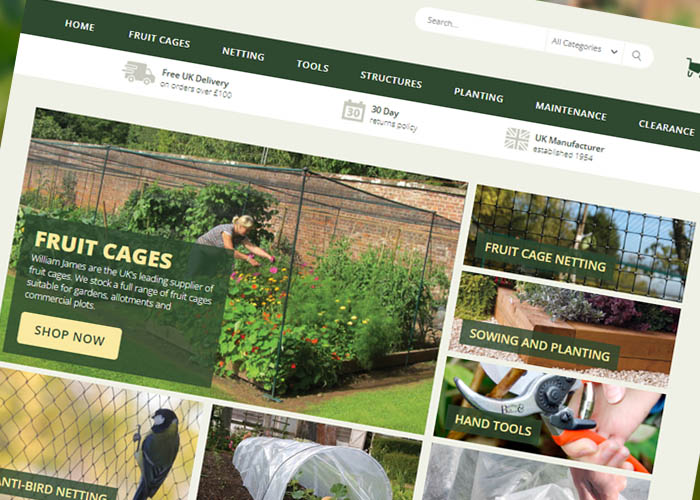
Allotment Layout & Planting Tips
The layout of your allotment actually has a really important role; the way you arrange your crops can affect the way in which they grow. So getting it right is key.
Allotment design is all about making sure you focus on a few essentials so that your garden has the best opportunity to thrive. With the basics in place, you can be a little more flexible with what you add to your allotment layout.
So, let's start by looking at five allotment layout essentials and what you need to consider in your planning.
1. Think About the Sun & Shade
Hopefully, if you are renting your allotment space, then you will receive one with a good amount of sun.
If you have the luxury to create your own allotment wherever you want to, then you should choose a sunny spot.
However, this is not always the case, you might end up with a shadier spot, and if you do, you need to choose fruits and vegetables that can thrive in these conditions.
Vegetables that can grow in the shade include:
- Beetroot
- Carrots
- Broad beans
- Leeks
- Kale
2. Creating Grass Paths
When thinking of the layout of your allotment, you need to plan the space well. Grass paths help you avoid walking over the beds and compromising the beds.
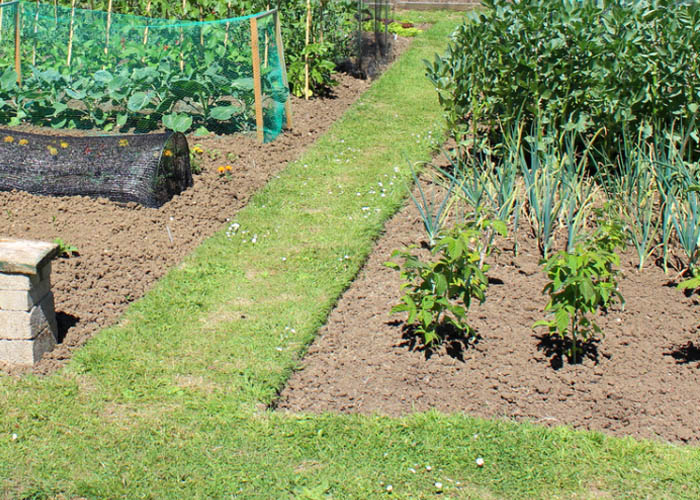
Allotment Path Ideas
Your allotment path is best positioned in the centre of your plot, with the raised beds running along both sides. Leave some space in between the beds, so you have easy access to your crops without trampling them.
If you have a big enough plot, you may be able to have two pathways running opposite each other. This allows you to access all beds easily, and it allows for more flexible planting.
When laying your path, make sure that the foundation is secure by using a mix of sand and gravel. Once this is done, you can then finish off with turf or wood chips, depending on which you find most appealing.
3. Companion Planting
Companion planting is a technique used in gardening, particularly in allotments. It is where two or more plants are planted close to each other.
It has several purported benefits, including pest control and increased yields. To put it simply, they can help each other to grow. So when planning your planting efforts bear that in mind.
Some of the best plants to grow together include:
| Allotment Plants | What to Grow Them With |
| Brassica plants, like cabbage or broccoli |
Mint |
| Leeks |
Carrots |
| Courgettes |
Calendula |
| Asparagus |
Tomatoes |
| Cabbage |
Sage |
Read Our Tips & Tricks for a Successful Harvest
4. Perennial Plants
Perennials are a form of plant that recur year after year. Depending on the plant, it may be evergreen, or it may go dormant in the winter months, coming back to life in the spring.
Some perennials can have significant life spans like shrubs and trees. At the same time, others will need replacing every few years. Perennials are hardier and tend to survive better in a hostile environment.
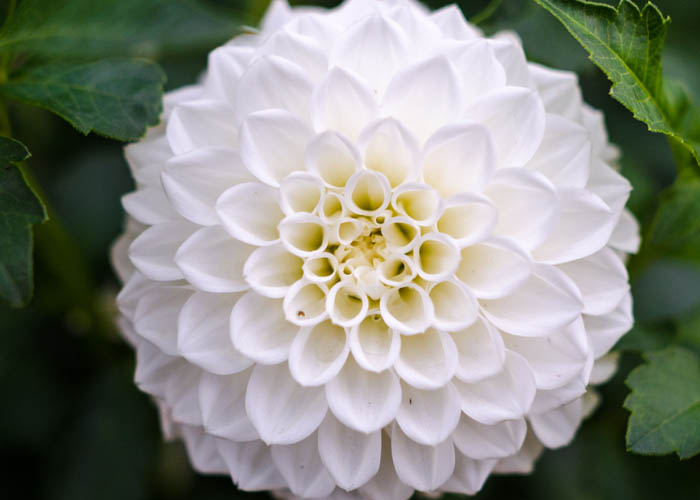
5. Disposing Of Garden Waste
Most people either rent space on an allotment or build one in their garden. Either way, it will create waste; however, most of the waste can be classed as garden waste and go in the appropriately coloured bin to be picked up by the council.
Garden waste can also be composted, and in doing so, it can become useful for your plants again and minimise the amount of waste you create.

How to Layout Your Allotment for Beginners
We touched on this briefly, but knowing the correct way to lay out your allotment plot will really help your gardening efforts and produce a wealth of beautiful plants and flowers.
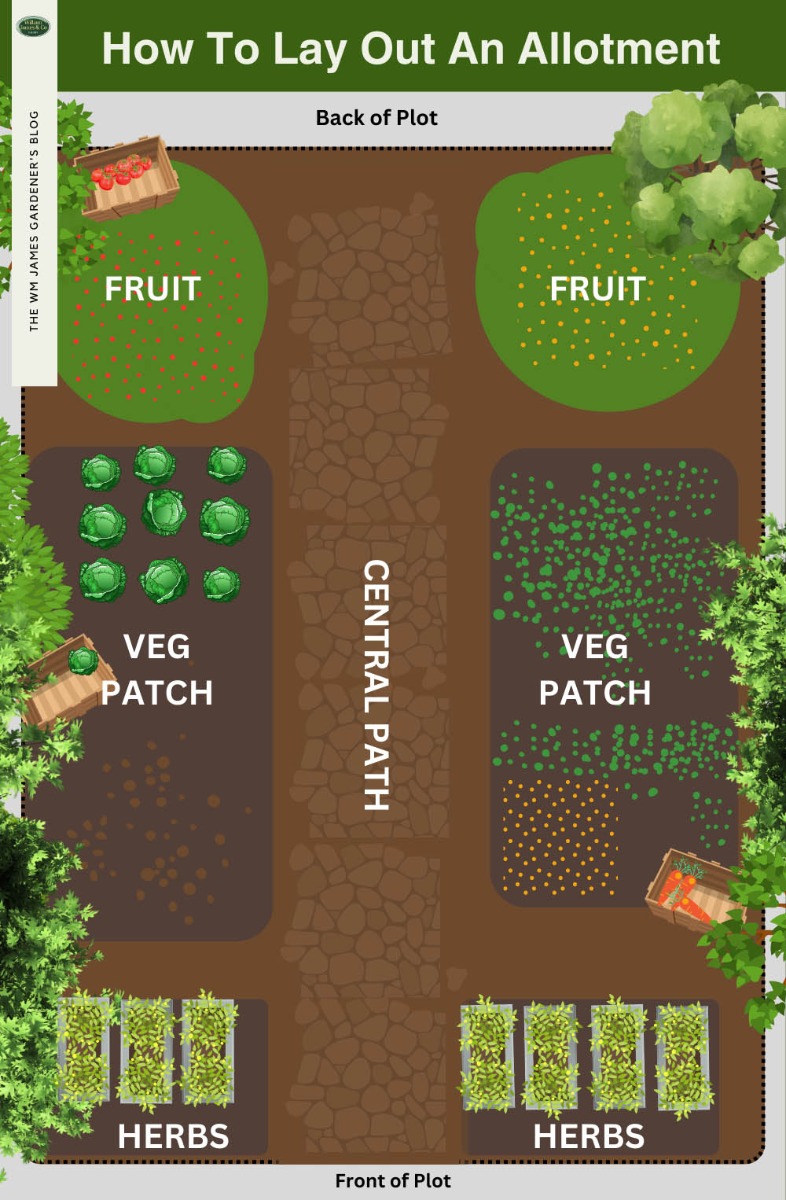
The most popular way to lay out an allotment is to have a path through the middle of the plot. The path should be wide enough for you to walk up and down, and if you plan on using a wheelbarrow, then it should be wide enough for this as well.
You can build out your raised beds on both sides of the path, with the beds running horizontally to the path.
You'll also want to leave some space around the plot for pathways, so you can access each raised bed without tramping through other beds. You don't need a lot of room – just enough to walk on either side of each bed and reach the furthest points.
If you're working with a larger plot, you can certainly add in an extra pathway and more raised beds.
When it comes to planting your crops, take into account the companion planting tips we discussed above.
Here are some of our beautiful raised beds…
Additional Allotment Planning Considerations
With the basics in place, your allotment will be in good shape, and you can start thinking about the specific plants, fruit and vegetables you'll be planting in your new allotment. We always recommend drawing up a plan of your new allotment layout and planning out plants before you start digging.
Some plants can't be grown in the same bed and soil, and so are best grown alone in containers or an isolated raised bed.
1. Planting Fruit Bushes & Fruit Trees
After choosing your fruit tree, you need to wait for the right time to plant it; generally, this will be sometime between December and March, depending on the fruit tree or bush, the weather, and the soil conditions.
You also need to find the right place for them too. To do so, you need to think about the amount of sunlight in the area, how exposed it is, whether there is enough space and finally, if the soil in that area would be hospitable for the fruit tree.

2. Weed Control
When it comes to controlling weeds, catching them early is advised. You can pull them out by hand as they occur or hoe them out.
If your allotment becomes overrun, weed control can become more complicated. You can use chemical weed killers, but they may also affect your plants.
You could also try covering the ground with an opaque sheet; this takes a while, but it kills the weeds, and chemicals do not compromise your plot.
Here are some of our recommendations:
Read More on How to Get Rid of Patio Weeds
3. Crop Rotation
Most growers use crop rotation. Perennial vegetables do not need to be rotated, but annual crops do.
They can be grown wherever convenient, although you should avoid growing them too often in the same place. Plan your rotation before the season starts to mark out the plots you want to use.
Read More About Crop Rotation Here
Essential Allotment Tools Every Gardener Needs, Novice or Pro
Having a set of good-quality gardening tools will make all the difference in your planning and planting. But what tools do you need, exactly?
There are several essential gardening tools that are considered necessary for your allotment, which includes:
- Trowel
- Spade
- Fork
- Rake
- Gardening gloves
- Watering can/hose
In addition to the necessities, there are some other items that you might want to consider.
- Wheelbarrow
- Hoe
- Netting
- Canes
- Secateurs
- Water butt
- Fruit Cage
You should consider investing in some form of storage to keep all of your tools onsite, secure and safe from the weather.
Our Wooden Box Store is great for gardeners with smaller allotments, and our Workshop Range collection is ideal for larger plots.
Rounding Up Our Allotment Design Tips
Designing an allotment is really a personal process. It's all about striking a balance between function and form. When planning, do your research and think about your time commitments and skill level.
Drawing up a plan is the best way to get started. Think about where you're going to position your path and how you will arrange your plants. Don't forget to account for any storage structures, too.
Stock up on all the tools, compost, and soil you need.
Once you're all set, make your way on down to your plot and start gardening!
WM James has an incredible range of top-quality gardening tools and equipment that every gardener needs, both beginners and seasoned planters alike, so don't forget to grab what you need. Shop some of our must-haves below!
*Free UK delivery is available on orders over £100.
FAQs
What is the Best Way to Layout an Allotment?
How Can I Make My Allotment Look Nice?
Firstly, you want to make your allotment tidy if you want to make it look nice. A storage box or cabin is great for keeping your tools, pots, wheelbarrow and other gardening tools inside rather than scattered around. You can also plant flowers and shrubs around the edges of your allotment to make it look aesthetically pleasing.
If you've got the space, you could even add in a bench or chairs to create a 'chill and relax' area with some outdoor furnishings.
How Many Hours a Week Should You Keep an Allotment?
This will depend on the size of your allotment and the crops you're keeping. If you're a beginner with a smaller allotment, you should expect to spend maybe one or two hours a day (or around 7 hours a week) tending to your plot.
Can I Use My Garden As An Allotment?
There's no reason why not! You'll need to make sure you lay down the soil and compost in the right way, and you'll also need to make sure there's enough space for your produce.
You may find that some crops do better in other areas of the garden than others. As a general rule, try to keep any allotment-type plants separated from the rest of your garden so they don't take over!





